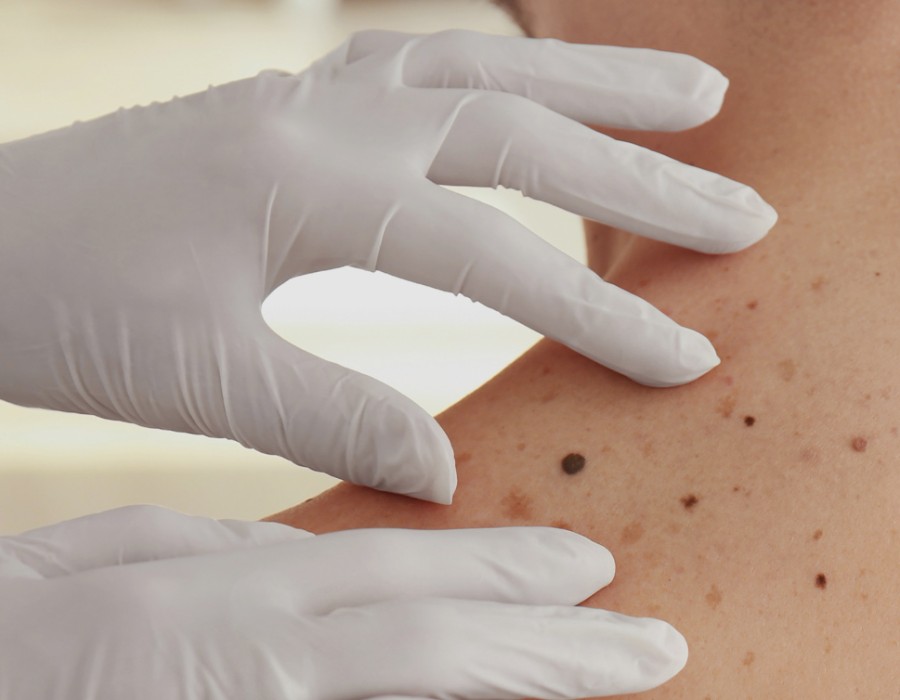Mole removal is a common procedure for those looking to improve the appearance of their skin or address health concerns related to moles. Whether you're considering mole removal for cosmetic reasons or as a preventive measure for potential skin cancer, understanding the process can help you make an informed decision. In this article, we will explore the types of mole removal, the benefits, and the importance of seeking professional advice for safe and effective outcomes. Let’s delve into the Mole Removal in Dubai.
What is Mole Removal?
Mole removal is a medical procedure that involves the surgical or non-surgical excision of a mole from the skin. Moles, also known as nevi, can vary in size, color, and shape, and some may change over time. While most moles are harmless, others may develop into melanoma, a type of skin cancer. Mole removal aims to eliminate moles that pose health risks or those that are cosmetically bothersome.
Types
Several methods can be used for mole removal, depending on the type and location of the mole. The most common techniques include:
Surgical Excision
Surgical excision involves cutting out the mole and a small margin of surrounding tissue. The wound is then stitched closed. This method is often recommended for larger moles or when there is a suspicion of skin cancer. The excised tissue is sent to a lab for further analysis.

Shave Excision
In shave excision, the mole is shaved off using a surgical blade. This technique is typically used for smaller moles that do not extend deeply into the skin. It’s a quicker procedure with minimal scarring but may require multiple treatments for deeper moles.
Laser Mole Removal
Laser mole removal uses focused laser light to break down and remove the mole's pigment. This method is ideal for superficial moles and tends to leave little scarring. However, it may not be suitable for moles that are deep or suspected to be cancerous.
Benefits
Mole removal offers several benefits beyond just improving appearance. These benefits make the procedure increasingly popular among individuals looking to enhance their skin's aesthetic or health. Some of the key benefits of mole removal include:
Prevention of Skin Cancer
One of the most important reasons for mole removal is to prevent the potential development of skin cancer. Moles that change in shape, size, or color can be early indicators of melanoma, a deadly form of skin cancer. By removing suspicious moles early, the risk of skin cancer is reduced.
Enhanced Skin Appearance
Moles, especially large or prominent ones, can affect an individual's appearance. Removing these moles can result in smoother, clearer skin, which boosts confidence and self-esteem. Many people opt for mole removal to enhance their facial appearance, while others may choose to remove moles from visible areas of the body.
Reduction of Irritation and Discomfort
Some moles can cause discomfort, especially if they are in areas that experience frequent friction, such as under the arms or on the back. By removing these moles, the risk of irritation or painful rubbing is minimized, providing long-term relief.
Avoidance of Infections
Moles that are regularly scraped, scratched, or irritated may become infected, leading to further complications. Mole removal reduces the risk of infections and promotes healthier skin. This is particularly relevant for individuals who have moles in areas prone to trauma, such as on the hands or feet.
Peace of Mind
Mole removal can also provide peace of mind. If you have a mole that has changed in appearance, removing it for a biopsy can provide clarity about your health. This can be crucial in identifying any underlying issues early on, ensuring a healthier future.
When Should You Consider Mole Removal?
Not all moles need to be removed. However, you should consider mole removal if:
- The mole has changed in size, shape, or color.
- The mole appears asymmetrical or has irregular borders.
- There is bleeding or itching around the mole.
- You have a family history of skin cancer or melanoma.
- The mole is in a location that is frequently irritated or uncomfortable.
If you notice any of these signs, it’s important to consult a dermatologist who can assess the mole and recommend the appropriate course of action.
FAQs
1. Is mole removal a painful process?
Mole removal is typically not painful as local anesthesia is used to numb the area. You may experience slight discomfort after the procedure, but it is manageable with over-the-counter pain relievers.
How long does it take to recover from mole removal?
Recovery time varies depending on the method used. Most people can resume normal activities within a few days, though it may take a few weeks for the wound to heal completely.
Will mole removal leave a scar?
Some scarring is possible, especially with surgical excision, but the scars usually fade over time. The extent of scarring depends on the size and location of the mole.
How can I tell if a mole is dangerous?
Look for signs such as asymmetry, irregular borders, uneven color, large size, and bleeding or itching. If you notice any of these symptoms, seek medical attention immediately.
Can mole removal be done at home?
It is not recommended to attempt mole removal at home. Professional treatment ensures the procedure is safe, effective, and minimizes the risk of complications.
Conclusion
Mole removal can be both a simple and complex process, depending on the size, type, and location of the mole. For most people, it is a straightforward procedure that can be completed in a short amount of time with minimal discomfort. However, if the mole is suspected to be cancerous or is in a difficult-to-reach area, the process may be more complex. Always consult a medical professional to determine the best course of action for safe and effective mole removal.






Comments